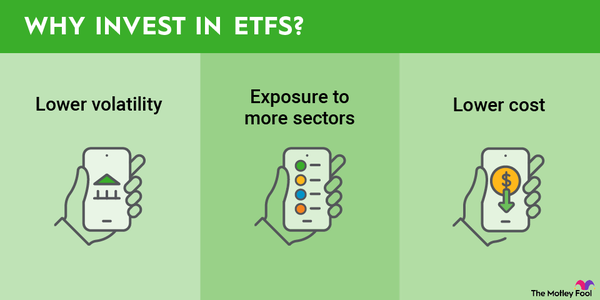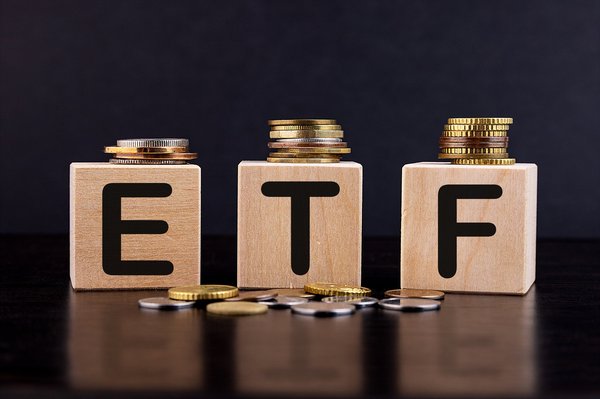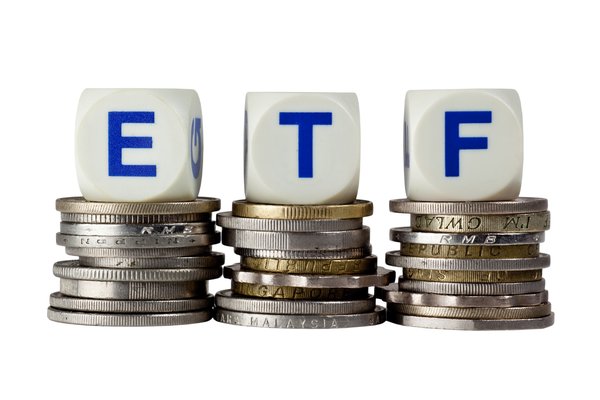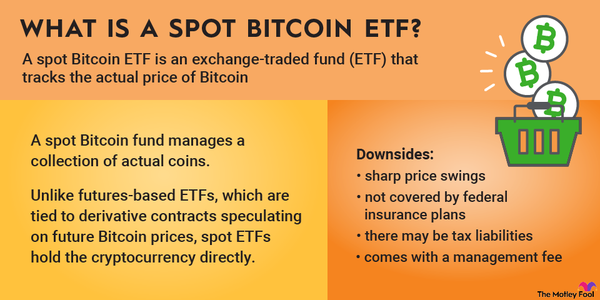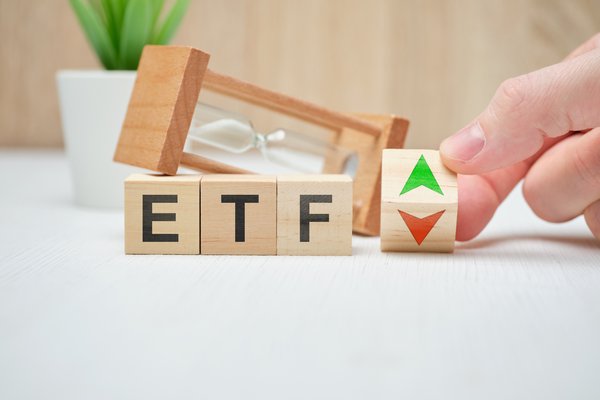VanEck Semiconductor ETF (SMH 1.61%) enables investors to invest in the global semiconductor sector. Semiconductors (also known as chips or semis) are crucial for the modern world as they're in computers, smartphones, appliances, gaming hardware, and medical equipment. Specialized chips are also vital to new technologies, like artificial intelligence (AI).
According to McKinsey, the global semiconductor market will reach $1 trillion by 2030, up from $600 billion in 2021. This sector-focused exchange-traded fund (ETF) enables investors to zero in on this opportunity through a single fund investment.
Exchange-Traded Fund (ETF)
This guide will teach you everything you need to know about investing in the VanEck Semiconductor ETF and how to invest in ETFs for beginners.
What is it?
What Is VanEck Semiconductor ETF?
VanEck Semiconductor ETF is a sector ETF focused on semiconductor stocks. It aims to track the performance of the MVIS US Listed Semiconductor 25 Index, which seeks to follow the overall performance of companies involved in semiconductor production and equipment.
It's the biggest ETF focused on semiconductor stocks based on assets under management (AUM) of $22.8 billion in mid-2024. The index and this ETF track the most liquid companies in the industry based on their market capitalization and trading volumes.
Its methodology favors the largest companies in the sector, so it will assign a higher weighting to the biggest semiconductor stocks. It also holds domestic and U.S.-listed foreign companies, giving investors broader exposure to the global semiconductor market.
How to buy
How to buy VanEck Semiconductor ETF
It's very easy to buy the VanEck Semiconductor ETF. Shares trade on a major stock exchange, allowing you to purchase the ETF in any brokerage account. Here's a four-step guide to help you add the semiconductor ETF to your portfolio.
Step 1: Open a brokerage account
You'll have to open and fund a brokerage account before buying shares of any ETF. If you need to open one, here are some of the best-rated brokers and trading platforms. Take your time researching the brokers to find the best one for you.
Step 2: Figure out your budget
Before making your first trade, you'll need to determine a budget for how much money you want to invest. You'll then want to figure out how to allocate that money. The Motley Fool's investing philosophy recommends building a diversified portfolio of 25 or more stocks you plan to hold for at least five years. So, if you have $10,000, you'd want to invest about $400 across 25 different holdings.
On the one hand, investors can often allocate a larger portion of their portfolio to ETFs since they offer built-in diversification benefits. On the other hand, the VanEck Semiconductor ETF holds several semiconductor stocks, so its sector focus and weighting toward the largest semiconductor companies make it less diversified than other ETFs. You don't want to allocate too much of your portfolio to a single-sector ETF.
Step 3: Do your research
You need to thoroughly research any potential investment before committing your money. When analyzing an ETF, you should review its strategy, holdings, expense ratio, and historical performance and compare it to the best ETFs to buy.
Step 4: Place an order
Once you've opened and funded a brokerage account, set your investing budget, and researched the investment, it's time to buy shares. The process is relatively straightforward. Go to your brokerage account's order page and fill out all the relevant information, including:
- The number of shares you want to buy or the amount you want to invest to purchase fractional shares.
- The ticker (SMH for VanEck Semiconductor ETF).
- Whether you want to place a limit order or a market order. The Motley Fool recommends using a market order because it guarantees you buy shares immediately at market price.
Once you complete the order page, click to submit your trade and add the semiconductor ETF to your portfolio.
Holdings
Holdings of VanEck Semiconductor ETF
VanEck Semiconductor ETF tracks the MVIS US Listed Semiconductor 25 Index, which features 25 stocks. The ETF had 26 holdings in mid-2024 (25 semiconductor stocks plus cash). The top 10 were:
- Nvidia (NVDA 3.08%): 20% of net assets
- Taiwan Semiconductor Manufacturing (TSM 1.32%): 13.2%
- Broadcom (AVGO 1.13%): 8.1%
- Advanced Micro Devices (AMD 0.28%): 5%
- ASML Holding (ASML -0.65%): 4.9%
- Applied Materials (AMAT 1.33%): 4.5%
- Lam Research (LRCX 0.81%): 4.5%
- Texas Instruments (TXN 1.3%): 4.4%
- Micron Technology (MU 3.48%): 4.3%
- Intel (INTC 2.41%): 4.2%
The companies rank as the largest global semiconductor companies by market value.
Should I invest?
Should I invest in VanEck Semiconductor ETF?
Investing is very personal. You should pick stocks and funds that align with your risk tolerance and return objectives; not every investment will be right for your situation. With that in mind, here are some reasons you might want to invest in VanEck Semiconductor ETF:
- You're seeking a sector ETF focused on semiconductor stocks.
- You want a growth-focused ETF or mutual fund with high return potential.
- Adding this ETF would help diversify your portfolio by providing exposure to the technology and semiconductor sectors.
- You don't need much dividend income.
- You believe semiconductor stocks will outperform over the long term but don't want to be an active stock picker and manage a portfolio of stocks.
Here's why this ETF might not be right for you:
- You're concerned about the fund's concentration at the top (its three largest holdings comprise more than 40% of its net assets).
- You're seeking a fund offering broader diversification across the technology sector.
- You'd like a lower-cost ETF.
- You already own several technology or semiconductor stocks.
- You're seeking a dividend ETF that offers a higher income yield.
- You're closer to or in retirement and want lower-risk investments.
Dividends
Does the VanEck Semiconductor ETF pay a dividend?
Yes, the VanEck Semiconductor ETF pays a dividend. In mid-2024, the fund had a dividend yield of about 0.4%, lower than the dividend yields of the S&P 500 Index (1.3%) and Nasdaq-100 Index (0.8%).
That low dividend yield is because many semiconductor companies prefer to retain most of their earnings to fund their continued expansion, like building additional semiconductor fabrication facilities. Meanwhile, if they return excess cash to investors, many semiconductor companies (and technology stocks, in general) prefer to use that money to repurchase shares rather than pay higher dividends.
Expense ratio
What is VanEck Semiconductor ETF's expense ratio?
ETF sponsors like VanEck charge fees to fund investors to manage the assets, known as the expense ratio. The VanEck Semiconductor ETF had a 0.35% expense ratio.
Its expense ratio was in line with other large semiconductor ETFs (iShares Semiconductor ETF (NYSEMKT:SOXX) and SPDR S&P Semiconductor ETF (XSD 1.37%), also with 0.35% expense ratios). However, it wasn't as low-cost as Invesco PHLX Semiconductor ETF (NYSEMKT:SOXQ) at 0.19%.
ETF Expense Ratio
At 0.35%, an investor would pay about $3.50 per year in management fees for every $1,000 invested in the VanEck Semiconductor ETF. For comparison, the fee would be only $1.90 per year for a lower-cost rival fund, like the Invesco PHLX Semiconductor ETF.
Historical record
Historical performance of VanEck Semiconductor ETF
The semiconductor industry has grown briskly over the years as more products have added technological features. That has helped drive strong performance for semiconductor stocks and the ETFs that track them.
Here's a snapshot of the VanEck Semiconductor ETF's returns compared to its benchmark and the S&P 500:
| Fund | 1-Year | 3-Year | 5-Year | 10-Year |
|---|---|---|---|---|
|
VanEck Semiconductor ETF |
72.26% | 26.70% | 37.68% | 28.05% |
|
Benchmark (MVIS US Listed Semiconductor 25 Index) |
72.46% | 26.90% | 37.79% | 28.03% |
| S&P 500 | 22.77% | 8.32% | 13.15% | 10.78% |
The fund's performance over the past decade has been truly remarkable. As of mid-2024, it ranked as the best-performing ETF over the past 10 years (excluding leveraged ETFs). It was one of four semiconductor ETFs in the top 10 (all of which were technology ETFs).
Related investing topics
The bottom line on VanEck Semiconductor ETF
VanEck Semiconductor ETF is one of several sector ETFs focused specifically on semiconductor stocks. The fast-growing semiconductor sector has produced robust returns for investors (the ETF was the best-performing non-leveraged ETF over the last 10 years). With the semiconductor sector on track to continue growing rapidly, the fund certainly warrants consideration for your portfolio.
FAQ
Investing in VanEck Semiconductor ETF FAQ
How to buy VanEck Semiconductor ETF?
Anyone with a brokerage account can buy VanEck Semiconductor ETF. To purchase shares, you would open the order page at your brokerage account and fill out all the relevant information, including:
- The number of shares you want to buy or the amount you want to invest to purchase fractional shares
- The ticker (SMH for VanEck Semiconductor ETF)
- Order type (limit order or a market order)
Double-check your order and then click submit to add this semiconductor ETF to your portfolio.
What is the symbol for the VanEck Semiconductor ETF?
The symbol for the VanEck Semiconductor ETF is SMH.
Is the VanEck semiconductor ETF a good investment?
VanEck Semiconductor ETF has certainly been a good investment over the years. It ranked as the best-performing ETF over the last 10 years (excluding leveraged ETFs), with a 28.2% annualized total return.
The ETF could continue delivering strong returns in the future. It holds the top 25 U.S.-listed semiconductor stocks, with a higher allocation to the largest ones (led by AI chip giant Nvidia).
Given the expected growth in semiconductor demand (especially for AI chips), leading companies should continue growing their revenue and earnings briskly, which should drive strong stock price appreciation and benefit this ETF as its value rises along with the global sector.


![Trump at White House podium. Official White House Photo by D. Myles Cullen. [MConverter.eu]](https://g.foolcdn.com/image/?url=https%3A%2F%2Fg.foolcdn.com%2Feditorial%2Fimages%2F801349%2Ftrump-at-white-house-podium-official-white-house-photo-by-d-myles-cullen-mconvertereu.jpg&op=resize&w=184&h=104)







